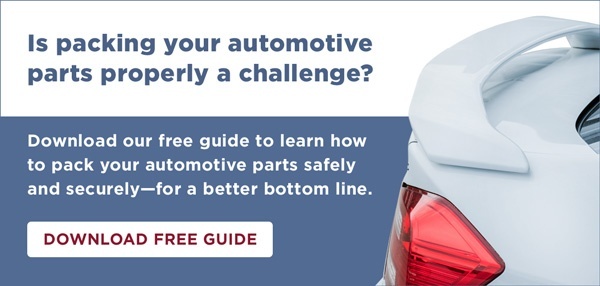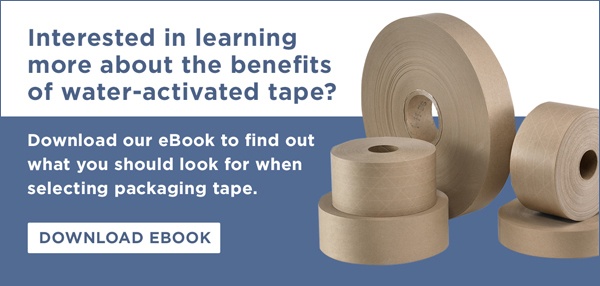Are you meeting your customers’ expectations? The automotive experts (whether they are professionals or enthusiastic amateurs) who use aftermarket parts and accessories to repair or enhance their vehicles are people who value quality workmanship. Not only do they have high standards for their own projects, they apply those standards to the vendors they work with. They expect the packages they receive from automotive aftermarket retailers to reflect the investment they made in the parts.
If you are not ensuring that your merchandise arrives in excellent condition, you may be losing business. And in a highly competitive industry like automotive parts, even a few shipping mistakes can have a long-term impact on your reputation and your success.
As an automotive retailer, you know that shipping parts is difficult. So, how do you create a positive impression with the customer who receives your shipment? It starts with using quality packing materials and practices. That means you need to choose high-quality cartons that are the right size and shape for the items you are shipping. It also means you need to be sealing them in a way that looks neat and clean, and that keeps them secured until they are opened by the recipient.
As an automotive retailer, you know that shipping parts is difficult. So, how do you create a positive impression with the customer who receives your shipment? It starts with using quality packing materials and practices. That means you need to choose high-quality cartons that are the right size and shape for the items you are shipping. It also means you need to be sealing them in a way that looks neat and clean, and that keeps them secured until they are opened by the recipient.
“In a highly competitive industry like automotive parts, even a few shipping mistakes can have a long-term impact on your reputation and your success.” TWEET THIS
Why Successful Automotive Aftermarket Retailers Use Water-Activated Tape
To succeed as an automotive aftermarket parts retailer, you can’t leave anything to chance. Using whatever materials you have lying around in the warehouse to package your merchandise and then hoping that the items arrive undamaged is not a good strategy. Instead, you need to look closely at your shipping practices to see what you are doing well and what you could be doing better.
For many companies, a significant source of issues is how they seal their packages. Some types of tape simply don’t produce the results needed. What these companies discover when they do a little research is that water-activated tape (WAT) delivers benefits on many levels.
For many companies, a significant source of issues is how they seal their packages. Some types of tape simply don’t produce the results needed. What these companies discover when they do a little research is that water-activated tape (WAT) delivers benefits on many levels.
Interested in learning about an automotive company that made the switch? Read our case study.
First, WAT (also called paper tape, gummed tape, and Kraft tape) helps automotive aftermarket retailers address their physical packing challenges. Its strong seal keeps packages from opening accidentally during shipment and protects their contents. The physical bond it creates with the carton’s surface is also tamper-evident, which helps prevent “press and grab” thefts.
WAT is also a very cost-effective option for sealing packages. Its one-strip-sealing capability means you use less of it as compared to other types of tape. And, a high-quality water-activated tape dispenser will last for many years, producing significant return on your investment.
Finally, WAT can help you present a polished image that impresses your customers. Packages sealed with WAT have a “finished” look that is difficult to achieve with other tape. Plus, WAT can be printed with your logo or other branding to help spread the word about your company. This lets you do some “mobile advertising” without having to pay for expensive printed boxes. And, ultimately it can create a positive loop: as people see the cartons with your branding and check out your offerings online, your business grows and you ship more cartons, which are seen by even more people… and so it goes.
Leveraging Every Competitive Advantage
When you look at the business leaders in any industry, it is the companies that pay attention to the details that are at the top of the list. Automotive aftermarket retailers are no different. From saving money to creating brand awareness, the way you ship your merchandise can have a positive impact on your business. And, it is easy to make changes to your shipping procedures to start capitalizing on the many benefits of water-activated tape.
If you have questions about our water-activated tape, water-activated tape dispensers, and other products for the packing and shipping of automotive aftermarket parts, please contact us at your convenience.
If you have questions about our water-activated tape, water-activated tape dispensers, and other products for the packing and shipping of automotive aftermarket parts, please contact us at your convenience.





